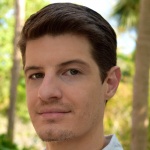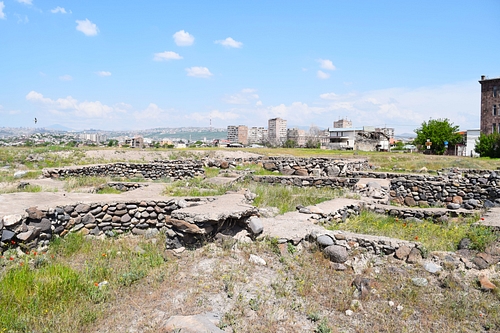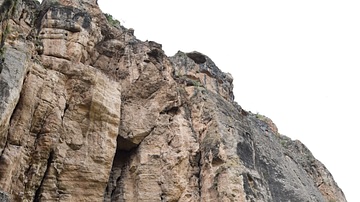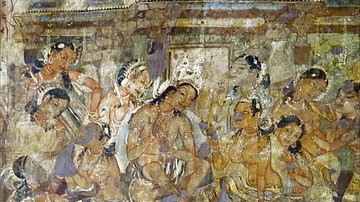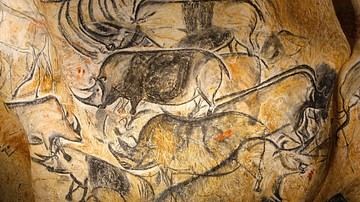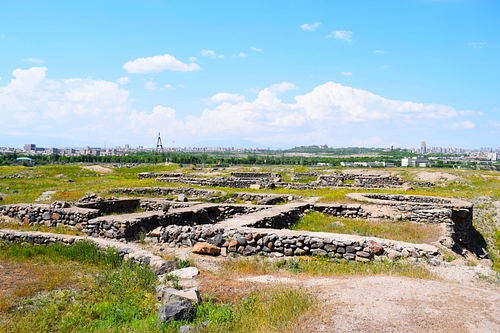
The Shengavit archaeological site is an ancient settlement occupied from c. 3500 - c. 2200 BCE and is located in a southern suburb of what is presently Yerevan, Armenia. The site is nearly 3 hectares (7 acres) in size - it was originally between 10-12 hectares (25-30 acres) - and lies 30 m (98 ft) above the banks of the Hrazdan River. Considered by many archaeologists to be Armenia's most prominent prehistoric and Early Bronze Age site, the artifacts found at Shengavit attest to the development of an early agricultural settlement of migrating tribes, whose technology and culture later spread outwards from the Armenian highlands into the Caucasus, Mesopotamia, and even the Levant.
An Unusual Archaeological Site
Although Shengavit is situated at a fortuitous location for defense and the exploitation of natural resources from the Hrazdan River - including lucrative salt deposits - this prehistoric settlement differed significantly from those of the ancient Hittites, Babylonians, and Egyptians from the fifth to the third millennia BCE. Originally founded in Neolithic times, Shengavit was encompassed by cyclopean-like walls of stones taken from the nearby Hrazdan River and thus has an unusual stratigraphic layout.
Archaeologists believe that the peoples who inhabited Shengavit lived together in interconnected, rectangular and circular structures made from mud clay and large split stones, which were brought from the Hrazdan River. Located next to these stones are circular hearths made from burnt brick, which served as pillar support to the rectangular structures and other round dwellings. Archaeologists have also uncovered two-story storage pits for grains and cereals in addition to cylindrical, stone-laid entrances, defensive stone walls connected to fortified towers with square layouts, and a mysterious tunnel that runs directly to the Hrazdan River. This peculiar layout is not common in other prehistoric and Bronze Age settlements in the Near East. Some archaeologists even posit that Shengavit was further divided into separate districts where groups of people lived according to their occupation or social standing - copper traders, stone workers or farmers lived on one side of the settlement, while merchants lived in other sections.
Shengavit's People & Material Culture
Shengavit and its culture are increasingly viewed as a society in transition from tribal lifestyle to a sedentary community. (These people and their culture are referred to by academics as “Shengavitian” or “Kura-Araxes.”) Therefore, the advancement of society and cultural development at Shengavit appear to be similar and contemporaneous with other neighboring regions like Mesopotamia and Anatolia, despite Shengavit's unique structural layout. Material evidence demonstrates that Shengavit's inhabitants traded extensively with peoples located in present-day Iraq, Russia, Iran, and Turkey, and it is believed that Shengavit had a total population of between 2,000-6,000 people at its height.
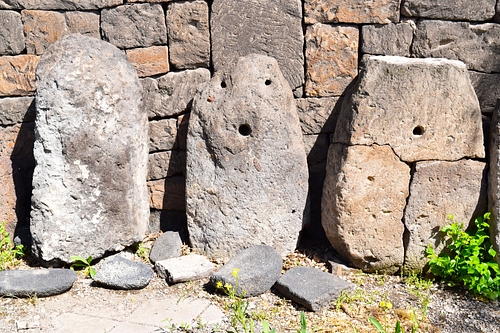
Among the most interesting finds at the site are “ornaments” carrying floral, geometric, or animal motifs. Statuettes, spindle heads, daggers, axes, ritual vessels, arrowheads, and tools in varying sizes and shapes have also been uncovered. Most artifacts were created from clay or animal bone. Fine adornments and beads made from precious and semiprecious metals like gold, silver, and bronze, stones such as jasper, as well as glass, all imply the development of early social stratification amongst those who resided at Shengavit; moreover, the remains of molds used in the casting of weapons and the wide variance of bronze alloys found in recovered artifacts insinuate an elevated level of metallurgy at Shengavit as well. Exquisite black-varnished, gray, and orange-red earthware and sepulchres have been unearthed beyond Shengavit's enclosure and within a number of dwellings.
The oldest artifacts discovered at Shengavit date to the Neolithic-Chalcolithic period or the “Copper Age.” There are four archaeological or “cultural layers” measuring 4 m (13 f) deep at Shengavit, which are of immense interest to archaeologists: the first and deepest layer dates from the late Neolithic era (c. 3500-c. 3000 BCE); the second layer dates from the early Eneolithic era (c. 3000-c. 2700 BCE); the third layer dates from the middle Eneolithic era (c. 2700-c. 2300 BCE); and finally, the fourth and shallowest layer dates from the late Eneolithic era (c. 2300-c. 2000 BCE.)
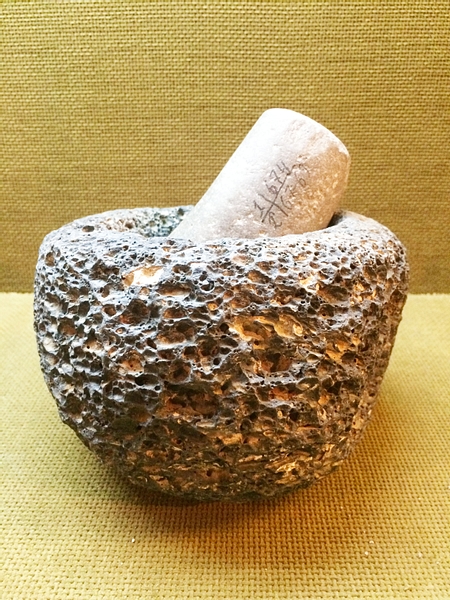
Recent Excavations & Human Impact
Yevgeni Bayburdian and Hovsep Orbelli were the first researchers to work at Shengavit from 1936-1938 CE for the Soviet Committee for the Preservation of Historical Monuments, but their excavations ceased at the end of the Great Purge and World War II. (Bayburdian was subsequently arrested, tried, and executed under orders from Joseph Stalin.) Investigations and excavation work led by Sandro Sardarian lasted from 1958 until 1980 CE but stopped just after the beginning of the Soviet-Afghan War (1980-1989 CE). A small museum opened on the site's environs in 1968 CE to mark the 2750th anniversary of the founding of Yerevan (or ancient Erebuni); that same year, the excavated constructions were partially restored and opened to the public.
Human degradation has taken a heavy toll on Shengavit. After Stalin's death in 1953 CE, the Soviet Union sold a portion of land occupied by Shengavit in order to build a hospital. After Armenia gained its independence in 1991 CE, an additional 40% of the Shengavit preserve was sold illegally and privatized. In recent years, excavation work has once more resumed and was undertaken by Dr. Hakob Simonian in 2000 CE, which continued in 2009, 2010, and 2012 CE with the assistance of Dr. Mitchell Rothman, an archaeologist and professor at Widener University in the United States.
This article was made possible with generous support from the National Association for Armenian Studies and Research and the Knights of Vartan Fund for Armenian Studies.
